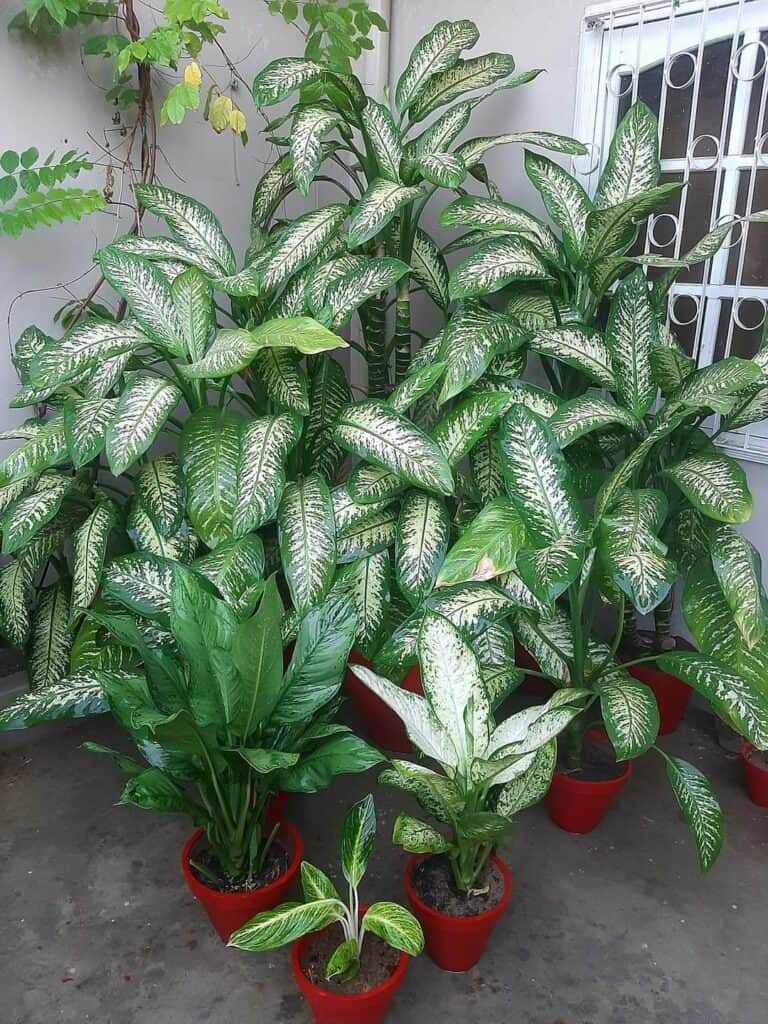- What is Diffenbachia?
- Cultivation of Diffenbachia
- Light
- Watering
- Humidity
- Temperature
- Fertilizer
- Pruning
- Propagation
- Potting
- Choosing the Right Species
- Light Requirements
- Size and Growth Habit
- Watering and Humidity
- Leaf Color and Pattern
- Tolerance to Neglect
- Popular Varieties of Diffenbachia
- Tropic Snow
- Camille
- Compacta
- Exotica
- Reflector
- Light and Temperature Requirements
- Light Requirements
- Temperature Requirements
- Humidity Requirements
- Temperature and Light Requirements for Variegated Varieties
- Temperature and Light Requirements for Dwarf Varieties
- Table Summary of Light and Temperature Requirements
- Watering and Humidity
- Humidity
- Summary:
- Propagation and Pruning
- Common Problems and Solutions
- 1. Yellowing leaves
- 2. Browning leaf edges
- 3. Drooping or wilting leaves
- 4. Slow or stunted growth
- 5. Leaf spots
- Q&A:
- What is Diffenbachia?
- What are the different species of Diffenbachia?
- How do I care for a Diffenbachia plant?
- What are some common varieties of Diffenbachia?
- Can Diffenbachia plants be grown outdoors?
- Video: Dieffenbachia rescue by propagation and some care tips!
Diffenbachia is a popular ornamental plant known for its large, vibrant, and variegated leaves. This tropical plant is native to the rainforests of Central and South America, where it thrives in the warm and humid conditions. It belongs to the family Araceae and is part of the Dieffenbachia genus, which comprises approximately 30 different species.
One of the main reasons why Diffenbachia is such a beloved houseplant is its ability to adapt to various growing conditions. This makes it a great choice for both experienced gardeners and beginners alike. Whether you have a bright, sunny spot or a shady corner in your home, Diffenbachia can thrive and bring a touch of tropical beauty to your space.
There are many different species and varieties of Diffenbachia available, each with its own unique characteristics and growth habits. Some popular species include Diffenbachia maculata, Diffenbachia seguine, and Diffenbachia oerstedii. These species vary in leaf size, color, and pattern, offering a wide range of options for plant enthusiasts.
When it comes to cultivation, Diffenbachia requires well-draining soil and regular watering to keep the soil evenly moist. It prefers bright, indirect light but can tolerate lower light conditions. However, it’s important to note that direct sunlight can scorch the leaves, so it’s best to place the plant away from intense sunlight.
What is Diffenbachia?
Diffenbachia, also known as dumb cane, is a popular indoor plant that belongs to the Araceae family. It is native to tropical regions of North and South America, including Brazil, Ecuador, and Colombia. Diffenbachia plants are known for their beautiful foliage and are often grown for ornamental purposes in homes and offices.
The name “dumb cane” comes from the plant’s milky sap, which contains needle-like crystals that can cause temporary numbing or loss of speech when ingested. This is why it is important to handle diffenbachia plants with care and keep them away from children and pets.
Diffenbachia plants typically have large, broad leaves that are ovate or lanceolate in shape. The leaves come in a variety of colors and patterns, including green, yellow, white, and cream, with marbled or striped designs. The size of the leaves can vary depending on the species and variety.
Diffenbachia plants are relatively easy to care for and can thrive in a wide range of conditions. They prefer bright, indirect light and moderate humidity. It is important to avoid direct sunlight, as it can scorch the leaves. The soil should be kept consistently moist, but not waterlogged. Overwatering can lead to root rot, while underwatering can cause the leaves to wilt.
Propagation of diffenbachia plants can be done through stem cuttings, which should be planted in well-draining soil and kept in a warm, humid environment. The cuttings will root within a few weeks and can then be transplanted into larger pots.
In addition to their aesthetic appeal, diffenbachia plants have been found to have air-purifying qualities. They can help remove harmful toxins from the air, making them a great choice for indoor spaces.
Cultivation of Diffenbachia
Diffenbachia is a popular houseplant known for its attractive foliage. It is relatively easy to cultivate and can thrive in various environments. Here are some tips on how to successfully grow and care for Diffenbachia plants:
Light
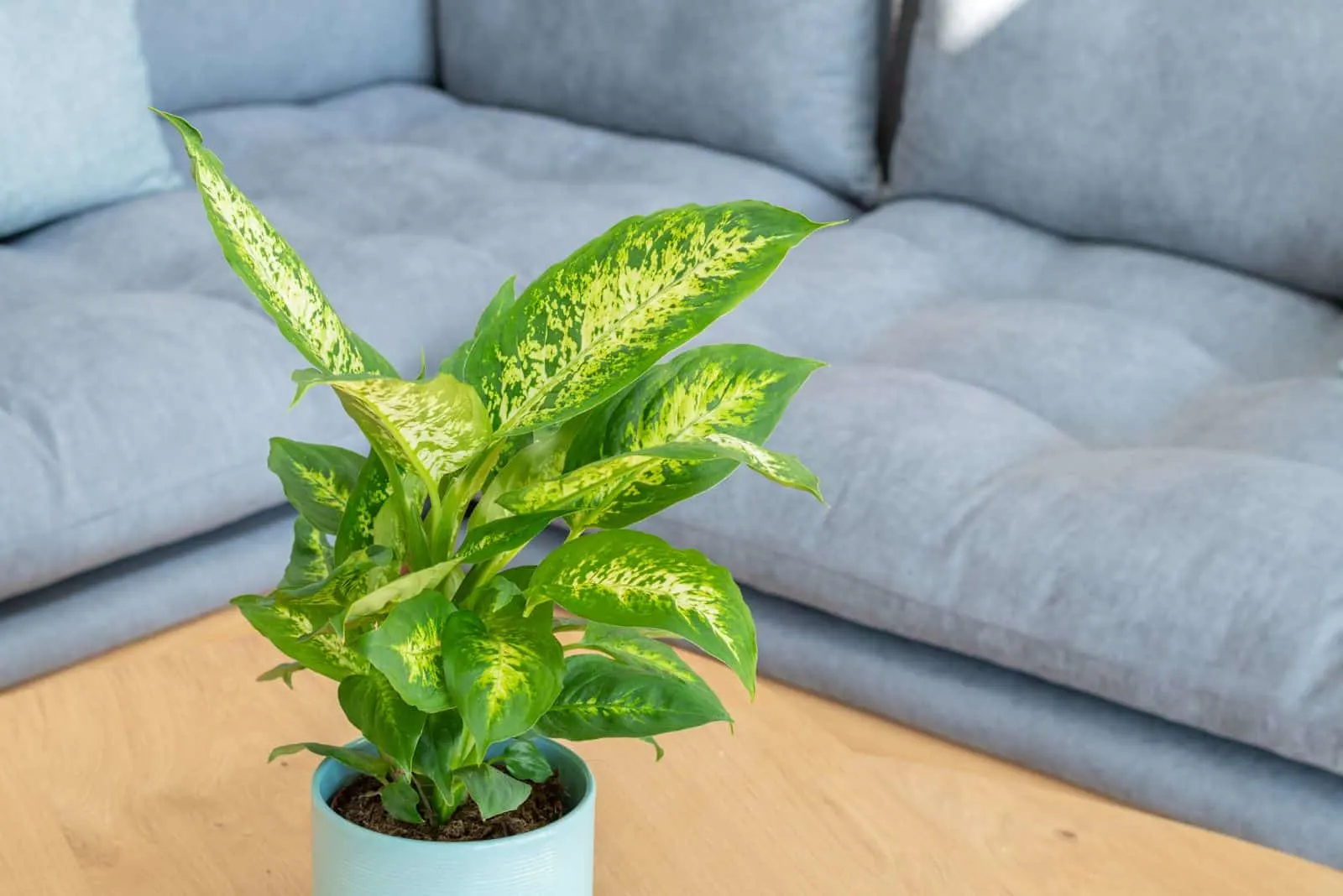
Diffenbachia plants prefer bright but indirect light. Direct sunlight can scorch their leaves, so it’s best to place them near a window with filtered light or in a spot that receives bright, indirect light.
Watering
Watering is an essential aspect of Diffenbachia care. These plants prefer evenly moist soil, but they don’t like to sit in waterlogged soil. Allow the top inch of soil to dry out before watering again. Overwatering can lead to root rot, so it’s important to strike a balance.
Humidity
Diffenbachia plants thrive in high humidity. To increase humidity levels, you can mist the leaves regularly or place a tray of water near the plant to provide evaporative moisture.
Temperature
Diffenbachia plants prefer temperatures between 65-75°F (18-24°C). They are sensitive to cold drafts, so make sure to keep them away from windows or doors that may let in chilly air.
Fertilizer
During the growing season (spring and summer), you can fertilize Diffenbachia plants every 2-4 weeks with a balanced houseplant fertilizer. Be careful not to over-fertilize, as it can lead to leaf burn or root damage.
Pruning
Regular pruning can help maintain the shape and appearance of Diffenbachia plants. You can trim off any yellowing or damaged leaves, as well as any leggy or overgrown branches. Pruning can also encourage bushier growth.
Propagation
Diffenbachia plants can be propagated through stem cuttings. Take a 4-6 inch cutting from a healthy plant, remove the lower leaves, and place it in moist soil or water. Keep the cutting in a warm and humid environment until roots develop.
Potting
When potting Diffenbachia, choose a well-draining potting mix and a container with drainage holes. Transplant the plant into a slightly larger pot when it becomes root-bound. Avoid using pots that are too large, as they can hold excess moisture and lead to root rot.
By following these tips, you can successfully cultivate beautiful and healthy Diffenbachia plants in your home.
Choosing the Right Species
When it comes to choosing the right species of Diffenbachia, there are a few factors to consider. Each species has its own unique characteristics and requirements, so it’s important to choose one that will thrive in your specific growing conditions.
Light Requirements
One of the first things to consider is the light requirements of the species. Diffenbachia plants generally prefer bright, indirect light. However, some species can tolerate lower light conditions, while others require more intense light. It’s important to assess the lighting conditions in your space and choose a species that will be happy there.
Size and Growth Habit
Diffenbachia species can vary greatly in size and growth habit. Some species stay relatively small, reaching only a few feet in height, while others can grow to be several feet tall. Consider the available space in your home or garden and choose a species that will fit well without overpowering the area. Additionally, some species have an upright growth habit, while others have a more sprawling or bushy growth habit. Choose a species that fits your aesthetic preferences.
Watering and Humidity
Different species of Diffenbachia have varying water and humidity requirements. Some species prefer consistently moist soil, while others prefer to dry out slightly between waterings. Additionally, some species thrive in higher humidity levels, while others can tolerate lower humidity. Consider your watering habits and the average humidity in your home or garden, and choose a species that matches those conditions.
Leaf Color and Pattern
One of the most appealing characteristics of Diffenbachia species is the beautiful color and pattern of their leaves. Different species can have different combinations of green, white, yellow, and silver on their leaves. Some species have large, bold patterns, while others have more subtle variegation. Consider your personal preference and choose a species with leaves that you find visually appealing.
Tolerance to Neglect
If you’re a busy person or tend to forget about your plants, you may want to choose a species of Diffenbachia that is more forgiving of neglect. Some species are more tolerant of inconsistent watering or lower light conditions, while others require more attention to thrive. Consider your lifestyle and ability to care for your plants, and choose a species that will be able to withstand some degree of neglect.
By considering these factors, you can choose the right species of Diffenbachia for your space and ensure that it will thrive and bring beauty to your home or garden.
Popular Varieties of Diffenbachia
Diffenbachias are popular houseplants known for their attractive foliage. There are many varieties of diffenbachia available, each with its own unique characteristics. Here are some popular varieties:
Tropic Snow

Tropic Snow is one of the most popular diffenbachia varieties. It features broad, creamy-white leaves with green speckles and streaks. The leaves have a beautiful glossy texture, adding to the overall appeal of the plant.
Camille
Camille is another popular variety known for its stunning foliage. The leaves have a combination of light green and dark green markings, giving them a vibrant and tropical appearance. This variety is a great choice for adding a splash of color to any indoor space.
Compacta
Compacta is a compact and bushy variety of diffenbachia. It has shorter stems and denser foliage compared to other varieties. The leaves are large, oval-shaped, and dark green with lighter green veins. Compacta is an excellent choice for smaller spaces or as a desk plant.
Exotica
Exotica is a striking variety with bold and colorful leaves. The leaves have a mix of dark green, light green, and creamy-white markings. Each leaf has a unique pattern, making this variety a real eye-catcher. Exotica adds a tropical touch to any interior.
Reflector
Reflector is a variety of diffenbachia known for its glossy, reflective leaves. The leaves are wide and elongated, with a dark green color and a glossy finish. Reflector is a great choice for those who want a classic and elegant diffenbachia variety.
These are just a few examples of the popular diffenbachia varieties available. Each variety has its own unique beauty and characteristics, making it easy to find one that suits your personal taste and interior style.
Light and Temperature Requirements
Different species and varieties of Diffenbachia have varying light and temperature requirements. It is important to provide the right conditions for the plant to thrive.
Light Requirements
Most Diffenbachia varieties prefer bright indirect light. They should be placed near a window where they can receive filtered or diffused sunlight. Avoid exposing the plant to direct sunlight as it can scorch the leaves.
However, some varieties, such as the Diffenbachia ‘Camouflage’, can tolerate lower light conditions. These varieties can be placed in areas with medium to low light levels.
Temperature Requirements
Diffenbachia plants thrive in temperatures that range between 65°F to 85°F (18°C to 29°C). They prefer warmer temperatures but can tolerate slightly cooler conditions. Avoid placing the plant in areas with drafts or cold temperatures, as it can affect its health.
It is important to maintain a consistent temperature for the plant, avoiding extreme fluctuations. Sudden changes in temperature can lead to stress and damage the plant.
Humidity Requirements
Diffenbachia plants prefer high humidity levels. It is recommended to provide a humidity level of around 50% to 60%. To increase humidity, you can use a humidifier, place the plant on a tray with water and pebbles, or group it with other plants to create a microclimate.
If the air in your home is too dry, you can also mist the leaves regularly to increase humidity. This will help prevent the plant’s leaves from drying out and becoming brown around the edges.
Temperature and Light Requirements for Variegated Varieties
Variegated varieties of Diffenbachia, with their beautiful patterns and color variations on the leaves, require more light than green-leaved varieties. They need brighter indirect light to maintain their variegation. Placing them near a window with filtered sunlight is ideal.
However, variegated varieties are more sensitive to direct sunlight. Exposure to too much sunlight can fade or bleach the colors on their leaves. Therefore, it is important to be cautious with the amount of light they receive.
Temperature and Light Requirements for Dwarf Varieties
Dwarf varieties of Diffenbachia have similar light and temperature requirements as regular varieties. They need bright indirect light and temperatures between 65°F (18°C) to 85°F (29°C). The only difference is their size; dwarf varieties are smaller and more compact.
Due to their smaller size, dwarf varieties can be a great choice for smaller spaces or as tabletop plants. They still require the same care as regular varieties, including proper watering and humidity levels.
Table Summary of Light and Temperature Requirements
| Variety | Light Requirements | Temperature Requirements | Humidity Requirements |
|---|---|---|---|
| Regular Varieties | Bright indirect light | 65°F to 85°F (18°C to 29°C) | 50% to 60% |
| Variegated Varieties | More light than regular varieties | 65°F to 85°F (18°C to 29°C) | 50% to 60% |
| Dwarf Varieties | Bright indirect light | 65°F to 85°F (18°C to 29°C) | 50% to 60% |
Watering and Humidity
Watering is an essential aspect of Diffenbachia plant care. The frequency and amount of water needed may vary depending on factors such as the size of the plant, the type of pot it is in, the temperature and humidity of the environment, and the season.
Diffenbachias prefer to be kept evenly moist but not waterlogged. It is important to allow the top inch or two of the soil to dry out between waterings to prevent overwatering. Overwatering can lead to root rot and other diseases.
One way to check if the plant needs water is to lightly press your finger into the soil. If it feels dry, it’s time to water the plant. Another method is to lift the plant and feel its weight. If it feels light, it needs water; if it feels heavy, it is still adequately hydrated.
When watering, it is best to water the plant thoroughly until water drains out of the bottom of the pot, ensuring that the entire root ball is adequately hydrated. Allow the excess water to drain away, as waterlogged soil can lead to root rot.
Humidity
Diffenbachias are native to tropical regions and thrive in high humidity environments. In low humidity conditions, the plant may suffer from leaf drop, brown leaf edges, and slowed growth.
To increase humidity around the plant, you can mist the leaves with water daily or place the pot on a tray filled with water and pebbles. The water will evaporate and create a humid microclimate around the plant. Another option is to use a humidifier to maintain the desired humidity level.
Summary:
- Water the Diffenbachia plant when the top inch or two of soil is dry.
- Thoroughly water the plant until water drains out of the bottom of the pot.
- Avoid overwatering to prevent root rot.
- Check the plant’s weight or soil moisture level before watering.
- Maintain high humidity levels around the plant to promote healthy growth.
- Mist the leaves or use a tray of water and pebbles to increase humidity.
Propagation and Pruning
Propagation:
Diffenbachia can be easily propagated through stem cuttings. To propagate, simply cut a healthy stem from an adult plant and remove the lower leaves. Dip the cut end in rooting hormone and place it in a container filled with moist potting mix. Keep the soil consistently moist and provide indirect light. After a few weeks, roots will start to develop, indicating successful propagation.
Pruning:
Pruning is essential for maintaining the overall health and appearance of Diffenbachia plants. Regular pruning helps to remove dead or yellowing leaves, encourage bushier growth, and shape the plant. When pruning, make sure to use clean and sharp pruning shears to prevent the spread of diseases. Additionally, it’s important to wear gloves as some species of Diffenbachia have sap that can cause skin irritation.
When pruning, start by removing any dead or yellowing leaves at the base of the plant. This will improve air circulation and reduce the risk of disease. To encourage bushier growth, you can also pinch back the tips of the stems. However, be careful not to remove too many leaves or stems at once, as this can shock the plant.
Common Problems and Solutions
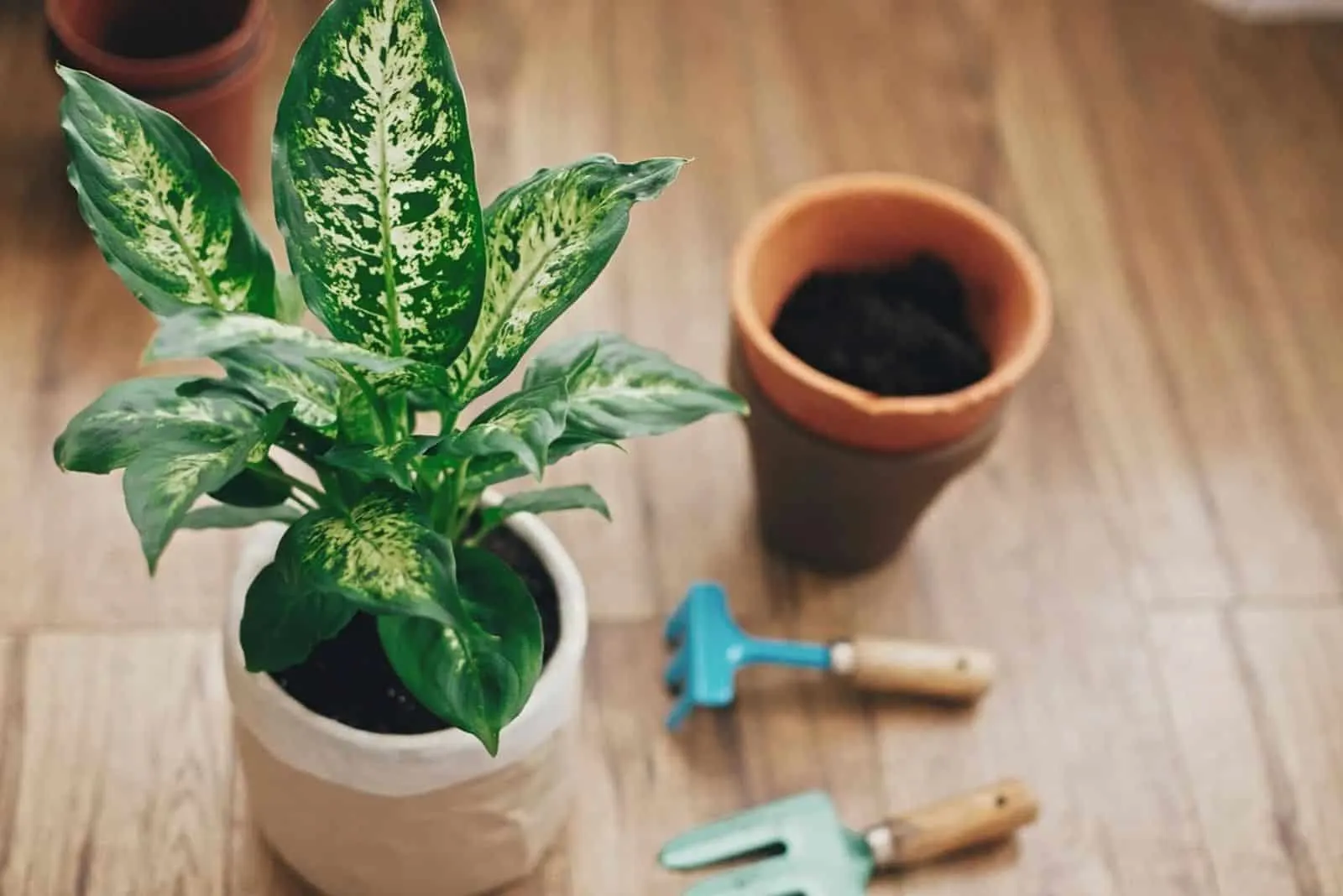
1. Yellowing leaves
Yellowing leaves in a diffenbachia plant can indicate a few different problems:
- Overwatering: If the soil remains consistently wet, the roots may rot and cause the leaves to turn yellow. To solve this, allow the soil to dry out between waterings, and make sure the pot has good drainage.
- Underwatering: Lack of water can also cause yellow leaves. Check the soil moisture regularly and increase watering if needed.
- Low light: Diffenbachia plants prefer bright, indirect light. If they receive too little light, the leaves may turn yellow. Move the plant to a brighter location, but avoid direct sunlight.
- Pest infestation: Some pests, such as spider mites or aphids, can cause yellowing leaves. Inspect the plant for signs of pests and treat accordingly.
2. Browning leaf edges
Browning leaf edges can be a sign of several issues:
- Low humidity: Diffenbachia plants thrive in high humidity environments. If the air is too dry, the leaf edges may brown. Increase humidity by placing a tray of water near the plant or using a humidifier.
- Overfertilization: Excessive fertilizer use can result in salt buildup in the soil, causing the leaf edges to brown. Flush out the soil with water to remove excess salts and adjust the fertilization routine.
- Underwatering: Inconsistent watering can cause leaf edges to turn brown. Make sure to water the plant regularly, allowing the soil to partially dry between waterings.
3. Drooping or wilting leaves
Diffenbachia plants may exhibit drooping or wilting leaves due to the following reasons:
- Underwatering: Lack of water can cause the plant to become dehydrated, resulting in drooping leaves. Water the plant thoroughly and maintain proper watering schedule.
- Overwatering: If the roots are constantly wet, they may suffocate and lead to drooping leaves. Allow the soil to dry out between waterings and ensure proper drainage.
- Root rot: Overwatering and poor drainage can cause root rot, which will manifest as drooping or wilting leaves. Take the plant out of the pot, trim away any rotten roots, and repot it in fresh soil.
- Temperature stress: Extreme temperatures, either too hot or too cold, can cause leaf drooping. Keep the plant in a warm environment away from drafts or cold windows.
4. Slow or stunted growth
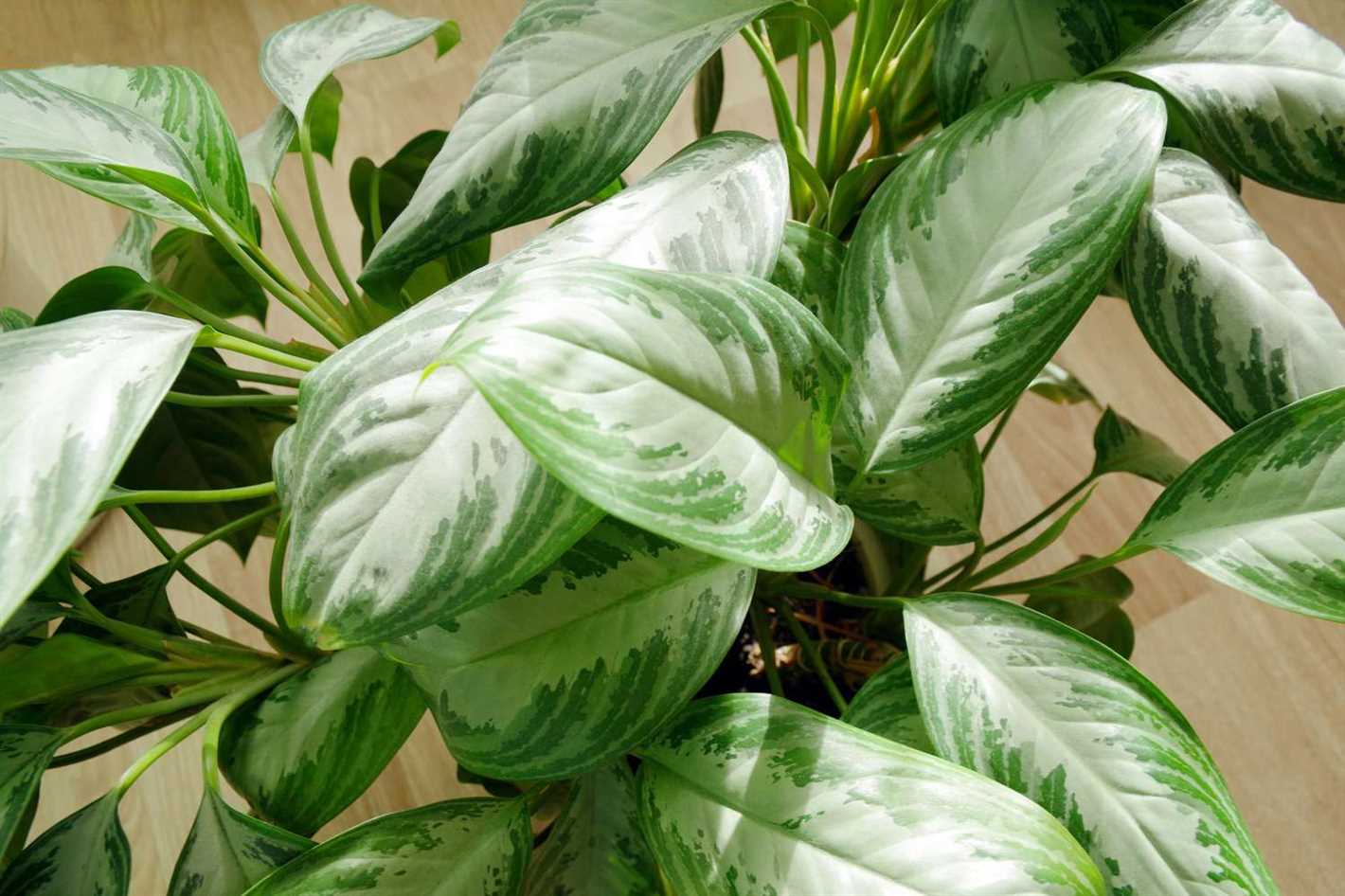
If your diffenbachia plant is not growing as expected, consider the following factors:
- Lack of light: Insufficient light can hinder the plant’s growth. Make sure the plant is placed in a well-lit area, but avoid direct sunlight.
- Improper fertilization: Providing too much or too little fertilizer can impact the plant’s growth. Follow the recommended fertilization guidelines for diffenbachia plants.
- Rootbound: If the plant has been in the same pot for a long time, the roots may have become crowded. Repot the plant into a larger container to allow for proper root development.
- Disease or pest infestation: Certain diseases or pests can affect the plant’s overall health and growth. Inspect the plant for any signs of disease or pests and take appropriate measures to treat them.
5. Leaf spots
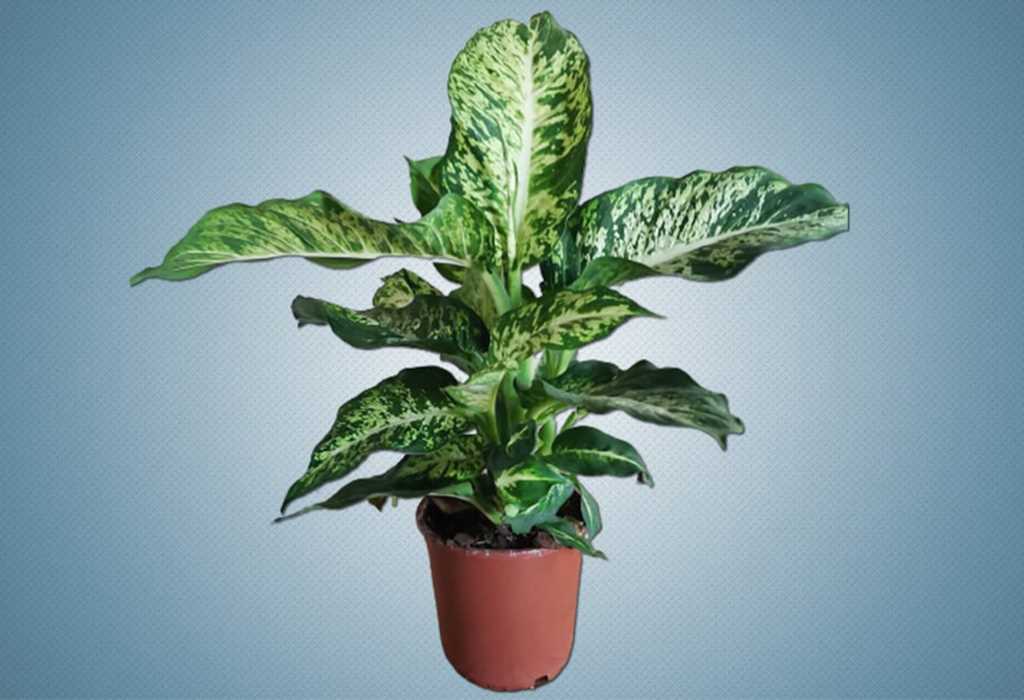
Leaf spots on a diffenbachia plant can be caused by various issues:
- Fungal or bacterial diseases: Overly moist conditions or excessively wet foliage can promote the growth of fungi or bacteria and result in leaf spots. Remove affected leaves and adjust watering habits to prevent further spread.
- Pest damage: Some pests, such as thrips or scale insects, can cause leaf spots. Inspect the plant for signs of pests and treat accordingly.
- Fertilizer burn: Excessive use of fertilizer can burn the leaves and create brown or yellow spots. Flush out the soil to remove excess salts and adjust the fertilization routine.
Q&A:
What is Diffenbachia?
Diffenbachia is a type of flowering plant that is native to the tropical regions of North and South America. It is known for its large, attractive leaves that come in a variety of colors and patterns.
What are the different species of Diffenbachia?
There are several different species of Diffenbachia, including Diffenbachia seguine, Diffenbachia amoena, and Diffenbachia maculata. Each species has its own unique characteristics and requirements for cultivation.
How do I care for a Diffenbachia plant?
Caring for a Diffenbachia plant involves providing it with the right amount of light, water, and nutrients. It is important to keep the soil moist but not overly wet, and to avoid overwatering. Diffenbachia plants should be placed in an area with bright, indirect light, and should be fertilized regularly during the growing season.
What are some common varieties of Diffenbachia?
Some common varieties of Diffenbachia include ‘Camille’, which has green leaves with white spots, and ‘Tropic Snow’, which has green leaves with white and cream variegation. Other varieties include ‘Compacta’, ‘Densa’, and ‘Exotica’.
Can Diffenbachia plants be grown outdoors?
Diffenbachia plants are typically grown as houseplants, but they can also be grown outdoors in tropical and subtropical climates. However, they are sensitive to cold temperatures and should be brought indoors during the winter months in cooler regions.
Video:
Dieffenbachia rescue by propagation and some care tips!
